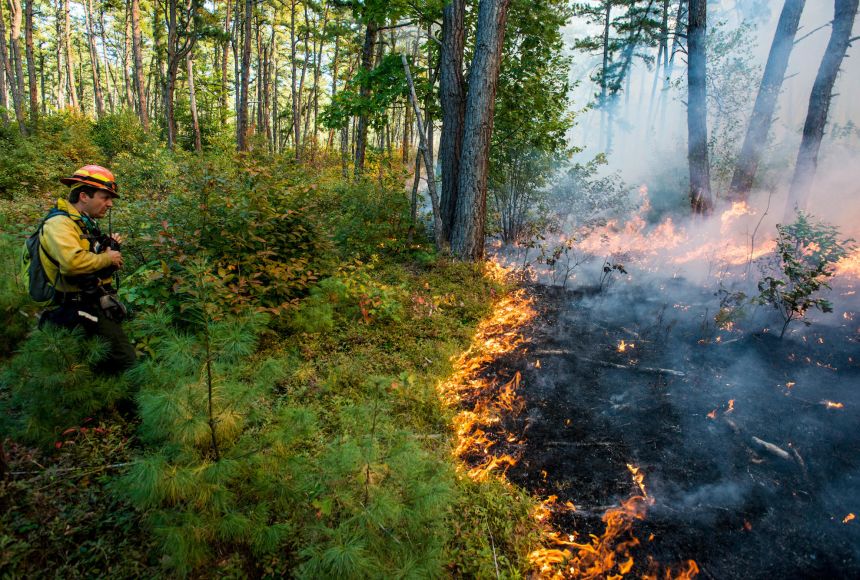Controlled burning, also known as prescribed burning, involves setting planned fires to maintain the health of a forest. These burns are scheduled for a time when the fire will not pose a threat to the public or to fire managers. In addition, forest conditions should call for a controlled burn and weather conditions should be right to allow burning but not enable a fire to spread out of control. Materials burned in a planned fire include dead grass, fallen tree branches, dead trees, and thick undergrowth.
Before a controlled burn is lit, a plan—or prescription—is drawn up. This plan includes details on how big the fire will be, what it will burn, and what managers hope to accomplish with the fire. It also includes the weather and environmental conditions under which the fire will burn and any situations that might require the fire to be extinguished. Controlled-burn managers also map out how the fire will be set, how the smoke will be managed, how to inform the public, what protective equipment might be needed, and what firefighting resources should be standing by.
Two types of controlled burning are most commonly used. The first, broadcast burning, involves lighting fires across a tract of land, from a few hectares to thousands of hectares in size. The second, pile burning, involves stacks of vegetation that are burned individually. Pile burning can be used when conditions are not safe to set a larger fire. In this case, leaves, limbs, and other debris are cut, collected, and stacked up to be burned, often at a later time when weather conditions permit. Pile burning is sometimes used to burn slash, the remnants of forest thinning or logging operations.
Controlled burns are lit for a number of reasons. By ridding a forest of dead leaves, tree limbs, and other debris, a prescribed burn can help prevent a destructive wildfire. Controlled burns can also reduce insect populations and destroy invasive plants. In addition, fire can be rejuvenating. It returns nutrients to the soil in the ashes of vegetation that could otherwise take years to decompose. And after a fire, the additional sunlight and open space in a forest can help young trees and other plants start to grow.
Some plants, such as certain pine species, require fire before the cones or fruits containing the seeds can release them. These cones or fruits need fire to melt a resin that holds the seeds inside. As a result, without fire these species cannot reproduce.
Controlled burns have become more important as fire suppression efforts have grown over the last century. Historically, smaller fires occurred in forests at regular intervals. When these fires are suppressed, flammable materials accumulate, insect infestations increase, forests become more crowded with trees and underbrush, and invasive plant species move in. Controlled burns seek to accomplish the benefits that regular fires historically provided to an environment while also preventing the fires from burning out of control and threatening life and property.

